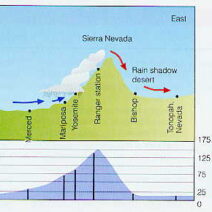The climate in Utah is as dramatic and diverse as its landscapes, encompassing everything from arid desert regions to snow-capped mountain peaks. Have you ever wondered how one state can contain such contrasting climates? This juxtaposition poses a challenge for both the environment and the inhabitants, as the varying weather patterns create unique ecosystems, opportunities, and obstacles. Understanding this climatic dichotomy can shed light on the broader implications for climate change and resource management.
To embark on this exploration, one must first consider the predominant climate zones found in Utah: the arid desert regions of the south and the alpine conditions prevalent in the northern mountainous areas. Utah’s geography significantly influences its climate, characterized by the Great Basin’s vast plateaus and arid valleys, where the average rainfall is markedly low. In contrast, the Wasatch Range and Uinta Mountains showcase a different climate scenario, with higher elevations that receive significant snowfall, sculpting a picturesque winter landscape.
Desert landscapes, such as those found in the Southern Utah regions like Arches and Canyonlands National Parks, experience hot summers and mild winters. The high desert climates are defined by significant temperature fluctuations; daytime highs in summer can soar above 100°F (37.8°C), while nighttime lows can drop significantly, sometimes below freezing in the winter months. This diurnal temperature variation is an adaptation mechanism for local flora and fauna, allowing them to endure extreme conditions. Indeed, life in the desert demands resilience, both for the organisms that thrive there and for the communities that depend on its resources.
Conversely, in Northern Utah, particularly in the Wasatch Front, a different climatic reality prevails. Here, the snow-drenched peaks create a vital snowpack that sustains the region’s water supply. With temperatures averaging at least 30°F (16.7°C) cooler than those in the southern desert regions, the snowfall accumulates during the winter months, inherently shaping the ecology and economy of this area. Ski resorts flourish in these conditions, bolstering tourism and providing vital employment opportunities. The contrasting realities create an interdependence that can complicate discussions about water allocation and land use.
However, with the shifting climate change narrative, both landscapes are facing unprecedented challenges. Desertification in certain areas introduces an existential concern for ecosystems. As temperatures rise and precipitation patterns become less predictable, desert regions may become even more inhospitable, posing challenges to agricultural practices and water availability. Local fauna, such as the desert tortoise and various cacti species, find their habitats jeopardized, raising questions about biodiversity preservation in these delicate ecosystems.
In the mountainous regions, the impact of a warming climate is equally profound. The snowpack, crucial for water supply during drier months, is at risk of diminishing. Scientists predict more precipitation will fall as rain rather than snow, potentially leading to reduced water availability in the hot summer months when demand peaks. This phenomenon catalyzes significant concern regarding water management, agricultural output, and the economic stability of regions that rely heavily on these seasonal patterns.
Additionally, the interplay between snow and rainfall is directly related to increasing instances of severe weather events. Flooding, rapid snowmelt, and landslides can wreak havoc on infrastructure, ecosystems, and local economies. As severe weather patterns become more prevalent, the intricate balance of life in Utah’s diverse climates may face detrimental shifts. This leads to the question, how do we adapt to maintain our unique identity as a state rooted in both desert and mountainous communities?
Addressing these challenges requires a multifaceted approach. Water conservation efforts, responsible land use planning, and the implementation of sustainable agricultural practices are all essential components of a comprehensive climate strategy. In addition, the cultivation of public awareness around the importance of conserving these irreplaceable landscapes is crucial. As climate activists and citizens alike ponder the future, it’s imperative to engage in discussions about protective measures and innovative solutions.
Utah’s climate offers an exemplary case study on the challenges posed by diverse weather phenomena and climate change. Its desert landscapes contrast starkly with the snowy peaks of its mountains, each presenting unique opportunities and risks. As we grapple with these challenges, we must consider the resilience inherent in the natural world and the ways we can emulate such adaptability in human systems. Only by acknowledging the intricate relationships between ecological and climatic patterns can we begin to forge a sustainable path forward. Our actions today will dictate the adaptability of Utah’s enchanting ecosystems for generations to come.
In conclusion, the climate of Utah serves as both a wonder and a warning, compelling us to reflect on the ongoing transformations driven by climate change. Embracing the challenge requires collective actions that prioritize conservation, sustainability, and awareness, particularly as these landscapes continue to evolve. Are we ready to heed the call of our environment, to protect the unique beauty of Utah while ensuring its ecosystems survive for future generations?







